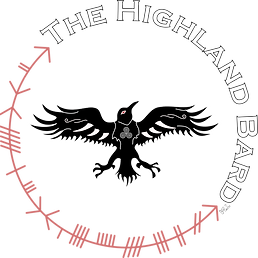Werewolves in Irish folklore are far more complex than they are elsewhere. Sometimes they are entirely benign and helpful even, others are fierce and violent.
The most famous region for werewolves is the old kingdom of Ossory. The werewolves of Ossory were cursed to live as wolves for 7 years and if they survived, they would return to human form, and another person from Ossory would take their place for 7 years, and so on.
The main story told centers around a priest who encounters a wolf who asks him to deliver the last rights to his dying wife, perplexed by the talking wolf he follows him to see what is going on, the wolf leads the priest to another wolf who lays dying, with a paw the male wolf pulls back his dying partners wolf skin to reveal a fragile elderly woman at death's door, the priest delivers the rights and she passes, her soul saved.
Another popular tale is of Laignech Fáelad who was the leader of a band of warriors, he was known to go "wolfing" and savaging local herds. He was the originator of a fearsome lineage of warriors in Ossory who could transform into wolves and devour people.
The legendary werewolves of Ossory, a kingdom of early medieval Ireland, are the subject of a number of accounts in medieval Irish, English, and Norse works. The werewolves were said to have been the descendants of a legendary figure named Laignech Fáelad whose line gave rise to the kings of Ossory. The legends may have derived from the activities of warriors in ancient Ireland who were the subject of frequent literary comparisons to wolves, and who may have adopted lupine hairstyles or worn wolf-skins while they "went wolfing" and carried out raids.
The medieval Irish work Cóir Anmann (Fitness of Names), which was probably based on earlier traditions, gives an account of a legendary warrior-werewolf named Laignech Fáelad. He was said to be the ancestor of a tribe of werewolves who were related to the kings of Ossory in eastern Ireland, which covered most of present-day County Kilkenny and County Laois prior to the Norman invasion of Ireland in the 12th century. According to Cóir Anmann,
He was a man that used to go wolfing, i.e. into wolf-shapes, i.e. into shapes of wolves he used to go, and his offspring used to go after him and they used to kill the herds after the fashion of wolves, so that it is for that that he used to be called Laignech Fáelad, for he was the first of them who went into a wolf-shape.
He was said in medieval genealogies to be the brother of Feradach mac Duach, the king of Ossory, and the ancestor of its subsequent kings who ruled until being deposed by the Normans. The late 14th century Book of Ballymote may refer to this tradition in a passage which speaks of "the descendants of the wolf" in Ossory having the power to change themselves and go forth to devour people.
Wolves, though now extinct in Ireland, were once numerous; the Irish were said to be plagued by the animals and bred a special type of dog, the Irish Wolfhound, to hunt them.
As late as 1650, the town of Coleraine was said to have been attacked by a pack of hungry wolves. The wolf had a long-standing place in Irish culture, and Irish literature throughout the medieval period associated warriors with wolves. They invoked a combination of ferocity, frenzied behaviour, unpredictable and savage animal behaviour, sexual potency, and martial prowess.
In the Irish literary mind, wolves were particularly closely linked with the practices of the fianna, warrior bands of landless young men who lived for much of their time in the wilderness and were thought of as living in close proximity to supernatural forces.
Warriors were often depicted with canine attributes and shared a common motif of a wild, disheveled, or naked appearance. They were frequently portrayed as wolves, hunting both animals and humans, and may have worn wolf-skins or a lupine hairstyle as part of a ritual transformation. The wolf-warriors or luchthonn (literally "wolf-skins") were said to "go wolfing" when they carried out raids. Such associations may have given rise to Irish legends of werewolves.
Source: Folklore ,Traditions & Legends

